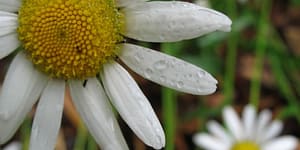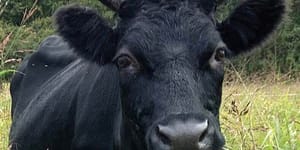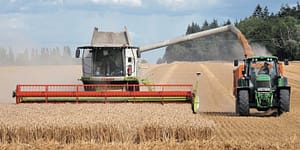Look to a Brighter Future

When looking to the future, it can feel impossible to make a difference as just one person in a world of millions; but when like-minded people join together for the common good, change is always possible. We can ensure a brighter future by telling our stories, learning from the stories of others, and then working together towards positive change. By building off of our collective experiences, we gain a unified vision for the future.
The following is an excerpt from From What Is to What If by Rob Hopkins. It has been adapted for the web.
We need to become better storytellers in such a way that we can, through a variety of media, give people a visceral sense of what a positive future would sound, taste, feel and look like. We need to create stories where the kind of future we want to see becomes commonplace, everyday. We need to tell stories with an underlying sense that the mere telling of them can create a degree of inevitability about their becoming a reality, and a sense that speaking them out loud is also of great benefit to our own mind, a powerful antidote to despondency and trauma.
When I spoke with James McKay, I asked him how spending the past ten years drawing and giving visual form to a hopeful, positive vision of the future had affected him personally. He told me, “I came from a place where I was incredibly bleakly pessimistic. I didn’t have any hope. I was originally interested in seeing the optimistic side almost as a thought experiment exercise to break out of that thought process. . . . I’ve had to be optimistic, but I’ve found that through that, I’m now quite 
We need to tell these stories in a wide variety of media: in films, podcasts, drawings, graffiti art, dance, plays, novels, music. These all help to familiarize us with the future they are portraying in different ways. We need also to use stories to bring to life the future that will be inevitable if we don’t change how we do things, and to support people in letting go of and grieving for the things we are losing around us right now.
We need to make intentional spaces for people to tell, share, or co-create these stories, spaces that are well facilitated and feel safe and inviting. We need to ground them in people, in characters we recognize, in places we recognize. Our stories need to try to speak to our deep memories, our bone memory, the things that fundamentally move and touch people, that really resonate. They need to make use of foreshadowing. And most important of all, we need to tell them as often as we can.
Every vital and much needed conversation with people about the gravity and scale of the challenges we and the natural world face should also include a taste of how it could be, a story of the future we could yet create. Every demonstration which seeks to raise awareness of or physically put itself in the way of the global challenges or particular manifestations of them should also be a celebration of the world we could yet create. The demonstrations at Standing Rock, for example, which tried to block the Keystone XL pipeline, modeled the grace, inclusivity, truthfulness and dignity that will be a key feature of the world they were striving to create. The Extinction Rebellion demonstrations in London in April 2019 created occupied spaces full of trees, conversation, connection, food and song which had a profound effect on those taking part, those passing through, and on the police officers who policed it. Telling these stories skillfully and making them everyday will make a positive, connected, celebratory future feel inevitable.
Recommended Reads
Recent Articles
Oxeye daisies are one of the most important plants for pollinators including beetles, ants, and moths that use oxeye daisies as a source of pollen and nectar. Instead of thinking about removing a plant like oxeye daisy, consider how you can improve the fertility and diversity of habitat resources in your home landscape, garden, or…
Read MoreIn her book, The Art of Science and Grazing, nationally known grazing consultant Sarah Flack identifies the key principles and practices necessary for farmers to design, and manage, successful grazing systems. This book is an essential guide for ruminant farmers who want to crate grazing systems that meet the needs of their livestock, pasture plants,…
Read MoreThis long-lived perennial legume is used for forage and erosion control. Kudzu is edible with many medicinal uses and other applications. Pollinators of all kinds love its prodigious lavender blooms!
Read MoreWhy is modern wheat making us sick? That’s the question posed by author Eli Rogosa in Restoring Heritage Grains. Wheat is the most widely grown crop on our planet, yet industrial breeders have transformed this ancient staff of life into a commodity of yield and profit—witness the increase in gluten intolerance and ‘wheat belly’. Modern…
Read MoreLearn how to grow shiitake mushrooms in almost any environment, including your yard and even your garage!
Read More







